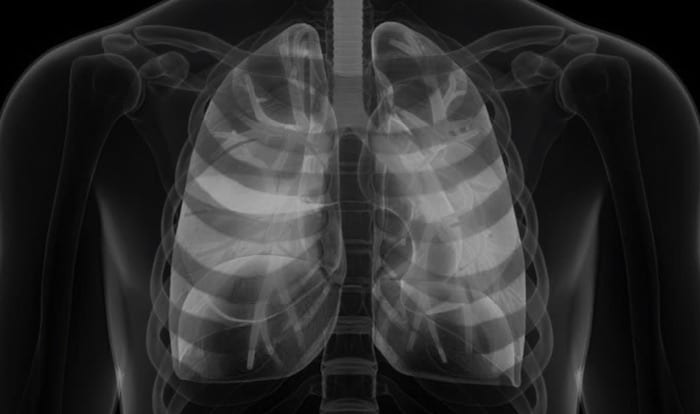Man versus Machine
aka Pulmonary Puzzler 012
A 25 year-old male was intubated for airway protection following a 90 mg/kg carbamazepine overdose — he was GCS 7 prior to intubation. He is sedated with morphine and midazolam infusions and mechanically ventilated in the emergency department while awaiting an ICU bed.
Forty-five minutes after intubation, the patient’s nurse calls for help because the patient has become hypoxic. Intubation was uneventful, there was no suspicion of aspiration and he had an SpO2 of 100% both prior to and immediately after intubation.
You arrive at the beside and note an SpO2 of 87%.
Questions
Q1. What are the causes of hypoxia occurring soon after intubation?
Answer and interpretation
Think DOPES:
- Displacement of the endotracheal tube (ETT)
- Obstruction of the ETT
- Patient — especially pneumothorax; also: pulmonary embolism, pulmonary edema, collapse, bronchospasm
- Equipment — ventilator problems
- ‘Stacked breaths’ — a reminder about bronchospasm and ventilator settings.
Extended mnemonic courtesy of Weingart’s fantastic EMCrit Podcast 16 – Coding Asthmatic, DOPES, & Finger Thoracostomy.
Q2. What is your first step in managing an intubated and ventilated patient who is hypoxic?
Answer and interpretation
Disconnect the ventilator and administer high-flow 100% oxygen (FiO2 1.0) using a bag-valve-mask.
Disconnection allows the release of trapped gas in the patient with severe bronchospasm — these patients usually have evidence of bronchospasm and/ or hypotension in addition to hypoxia. Also, if the patient is easy to ventilate and re-oxygenate, then the problem probably lies with the ventilator or the circuit.
In a ventilated patient that has a problem always think: (wo)man versus machine.
Q3. What are the most important things to check when there is a problem with a mechanically ventilated patient?
Answer and interpretation
First determine the severity of the problem — do you need to start immediate resuscitation?
Then assess MASH:
- Movement of the chest during ventilation —
is it absent or is movement only on one side? Is the chest hyper-expanded? - Arterial saturation (SaO2) and PaO2 —
obtain an ABG sample - Skin colour of the patient (is he turning blue or pinking up?) —
the SO2 monitor lags behind the true oxygen saturation of the patient. - Hemodynamic stability.
Now you can attempt to diagnose the problem.
Q4. The patient is difficult to manually ventilate. What should you do next?
Answer and interpretation
Determine if the problem lies with the endotracheal tube or with the patient.
If there is little chest movement, a patient problem is still possible, but a problem with the ETT needs to be be ruled out urgently:
- check ETCO2 to ensure the ETT is not in the esophagus and is patent.
- pass a suction catheter and/ or a bougie to ensure the ETT is not obstructed.
- check the placement of the tube visually — preferably by bronchoscopy, or alternative by by laryngoscopy from the top end (although this is far from 100% reliable).
- consider a CXR to check ETT position if hypoxemia is not critical, especially if endobronchial intubation is suspected.
If in doubt, and the hypoxia has not been rapidly resolved, take the tube out… and replace it.
If there is reasonable chest movement, a patient problem is most likely. Perform a focused exam and urgently seek and treat the following life-threats:
- pneumothorax
(look for asymmetrical chest movement) - lung collapse
(look for asymmetrical chest movement) - pulmonary edema
- bronchospasm
(chest wall movement may be minimal — look for hyperexpansion) - pulmonary embolus
Q5. What may have occurred if the bag is easy to compress during manual ventilation, but there is little or no chest movement?
Answer and interpretation
Suspect either:
- a circuit leak (e.g. cuff leak, disconnection, or a hole in the circuit)
OR - dislodgement of the endotracheal tube — you may be ventilating the oropharynx or the stomach.
Q6. What if the patient is easy to ventilate with the bag and the hypoxemia rapidly resolves?
Answer and interpretation
Find out what happened just before the desaturation:
- had there been a disconnection of the ventilator/circuit?
- had suctioning been performed?
(in some settings the loss of PEEP during disconnection of the circuit may lead to derecruitment and atelectasis, result in desaturation).
Otherwise, there may be a problem with the ventilator settings or there was an equipment failure.
- check ventilator settings
- trouble-shoot equipment failure
References
- For more Pulmonary cases check out the LITFL Top 150 Chest X-Rays
- Gomersall C. ICU Web — Trouble-shooting mechanical ventilation; Asthma.
- Weingart S. EMCrit Podcast 16 – Coding Asthmatic, DOPES, & Finger Thoracostomy.

CLINICAL CASES
Pulmonary Puzzler
Chris is an Intensivist and ECMO specialist at The Alfred ICU, where he is Deputy Director (Education). He is a Clinical Adjunct Associate Professor at Monash University, the Lead for the Clinician Educator Incubator programme, and a CICM First Part Examiner.
He is an internationally recognised Clinician Educator with a passion for helping clinicians learn and for improving the clinical performance of individuals and collectives. He was one of the founders of the FOAM movement (Free Open-Access Medical education) has been recognised for his contributions to education with awards from ANZICS, ANZAHPE, and ACEM.
His one great achievement is being the father of three amazing children.
On Bluesky, he is @precordialthump.bsky.social and on the site that Elon has screwed up, he is @precordialthump.
| INTENSIVE | RAGE | Resuscitology | SMACC

